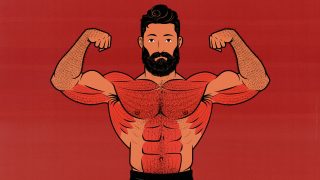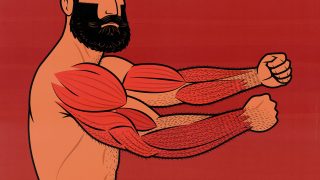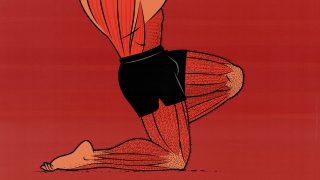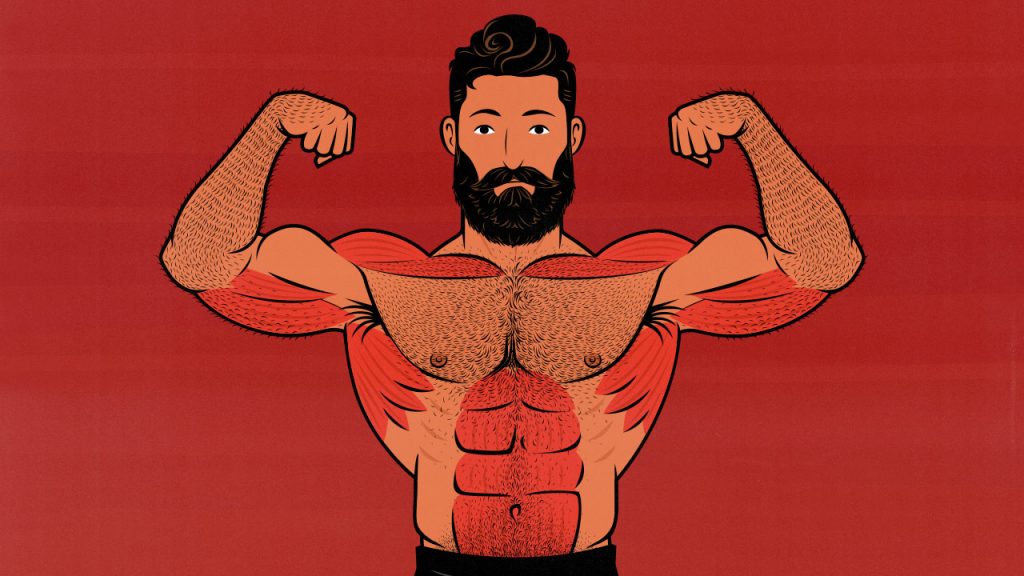
The Best Shoulder Day Workout for Building Muscle
Shoulder Day is a workout designed to bulk up your shoulders, making them bigger, stronger, and broader. You can also use it as an opportunity to sneak in some extra chest, back, or arm work, rounding out your workout routine.
In return, you can sneak some shoulder exercises into your other workouts, increasing the training frequency for your shoulders and provoking even faster shoulder growth.
You can do Shoulder Day once per week as part of a Bro Split or twice per week as part of a shoulder specialization program. We’ll show you how to do both.
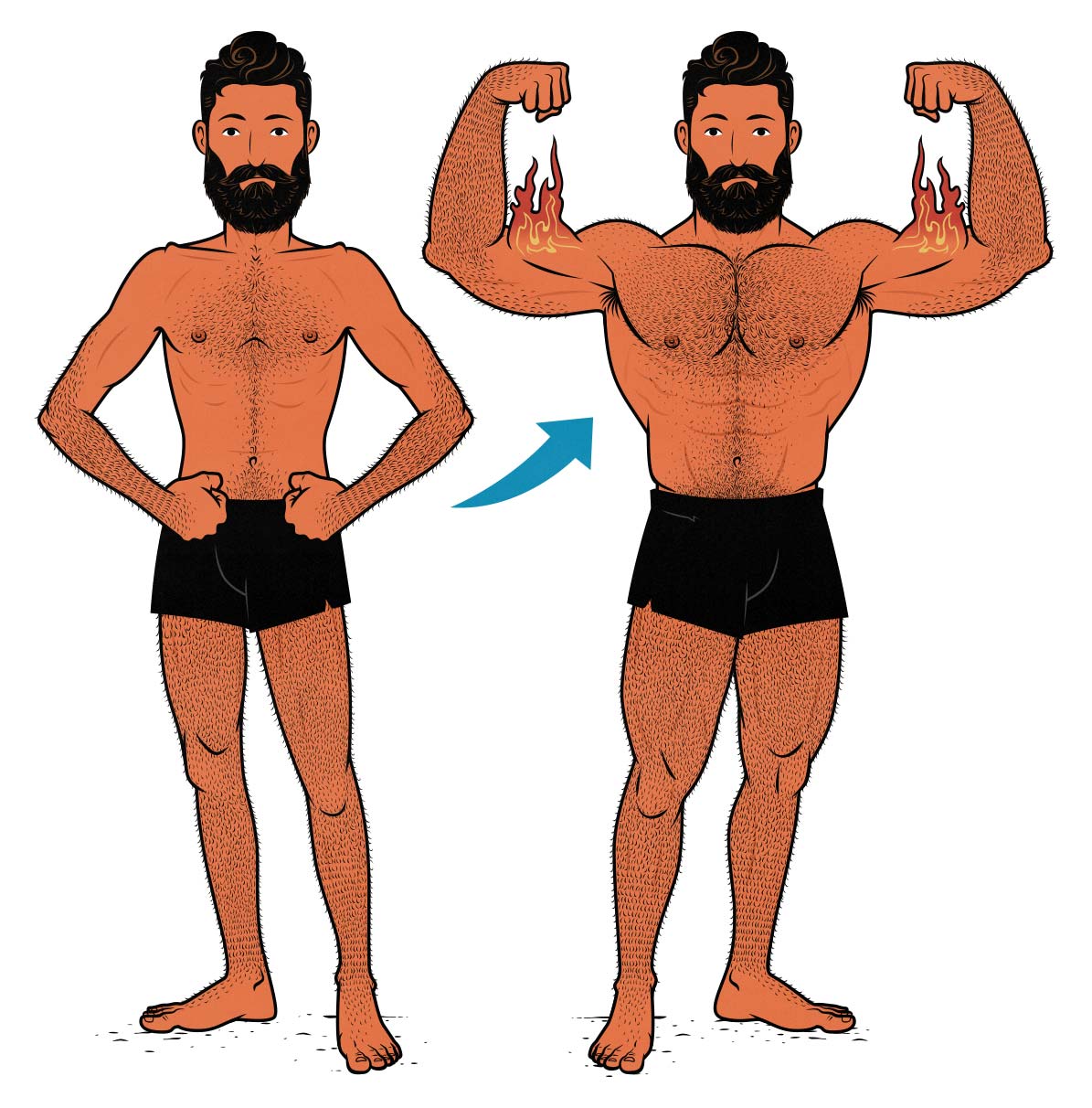
What’s A Shoulder Day Workout?
“Shoulder Day” is a workout focused on the shoulders: the front delts, side delts, and rear delts. Think of pressing exercises like overhead presses and incline bench presses, pulling exercises like wide-grip rows and face pulls, and isolation exercises like lateral raises and reverse flyes.
Shoulders Days are part of body-part “Bro Splits,” where you split your body into different muscle groups, allowing you to recover properly even while training 4+ times per week.
- Monday: Chest Day
- Tuesday: Back Day
- Wednesday: Shoulder Day <==
- Thursday: Leg Day
- Friday: Arm Day
- Saturday: Rest
- Sunday: Rest
You can also slot Shoulder Days into a shoulder or overhead press specialization routine, doing Shoulder Days on Mondays and Fridays, and a full-body workout on Wednesdays.
Muscles Worked During Shoulder Day
Shoulder Days are focused on your front delts, side delts, and rear delts. It could end there, but it probably shouldn’t.
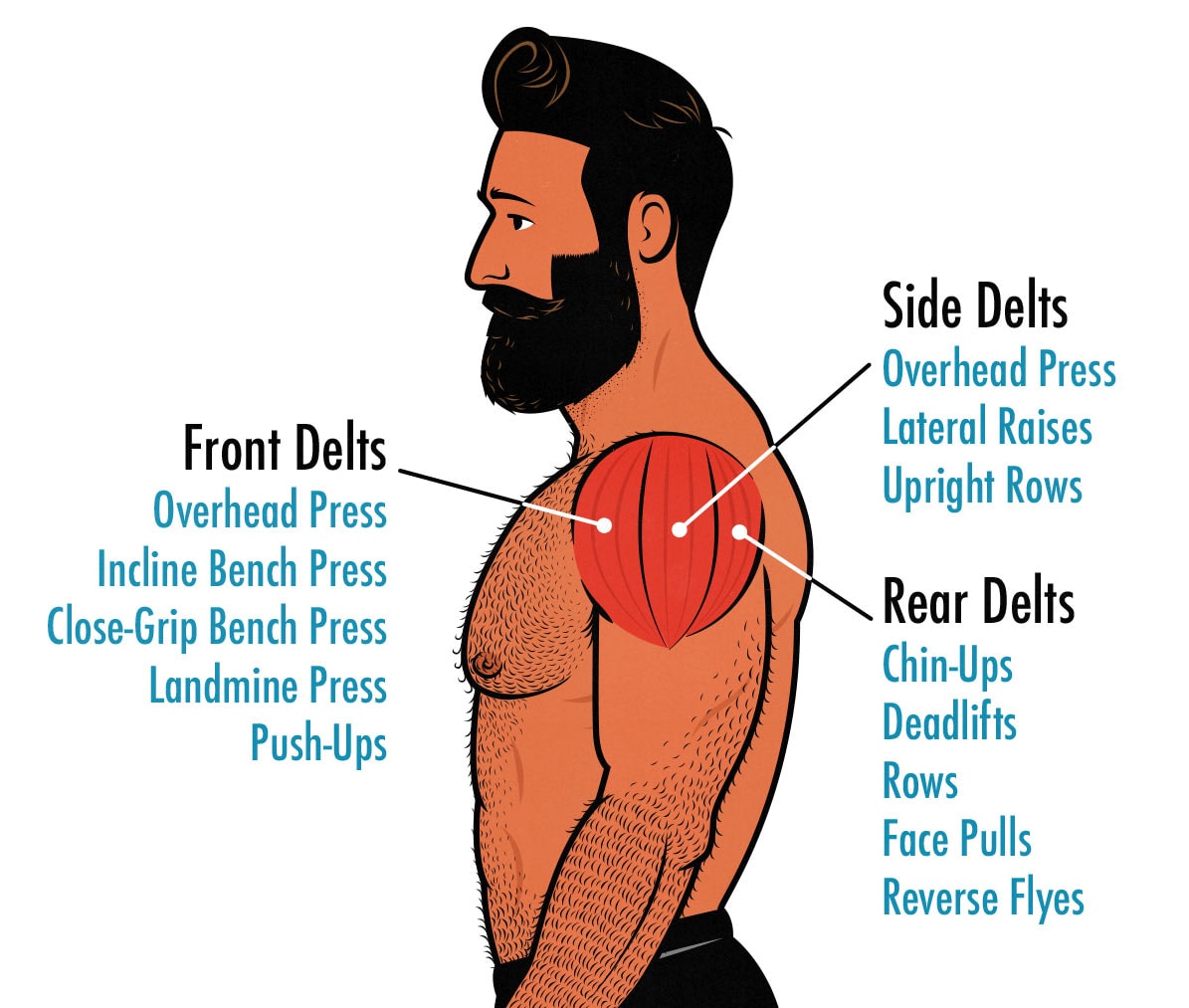
If you look at the best shoulder exercises, you’ll notice quite a lot of pressing. You can lean into that, giving your upper chest, triceps, serratus, and abs some extra stimulation.
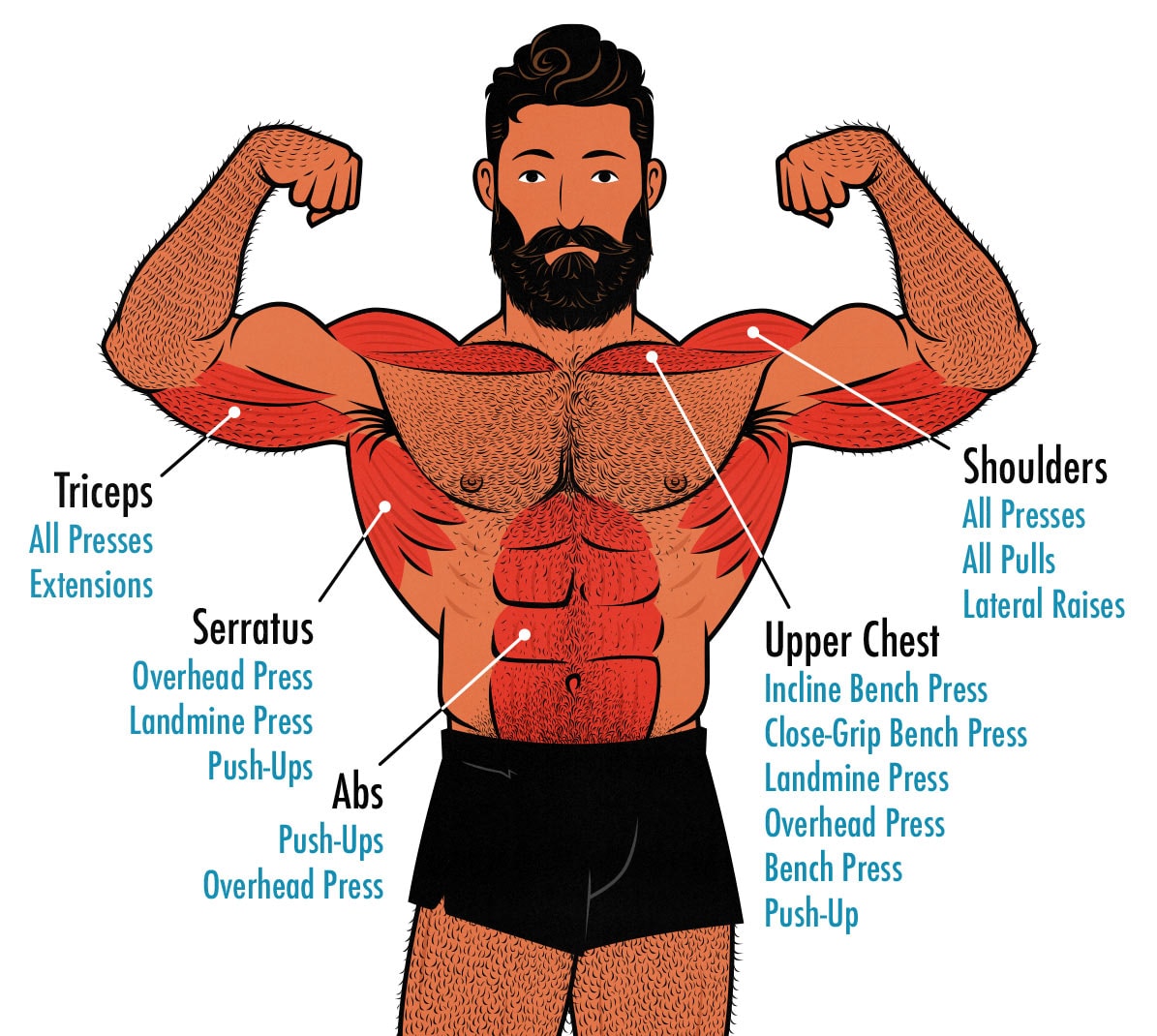
We can delve deeper into the pros and cons of each of these exercises, then assemble them into the perfect shoulder workout.
The Best Shoulder Day Exercises
The Best Front Delt Exercises
The front delts are the biggest part of your shoulders, and they’re involved in quite a few compound exercises, including overhead presses, push-ups, and bench presses.
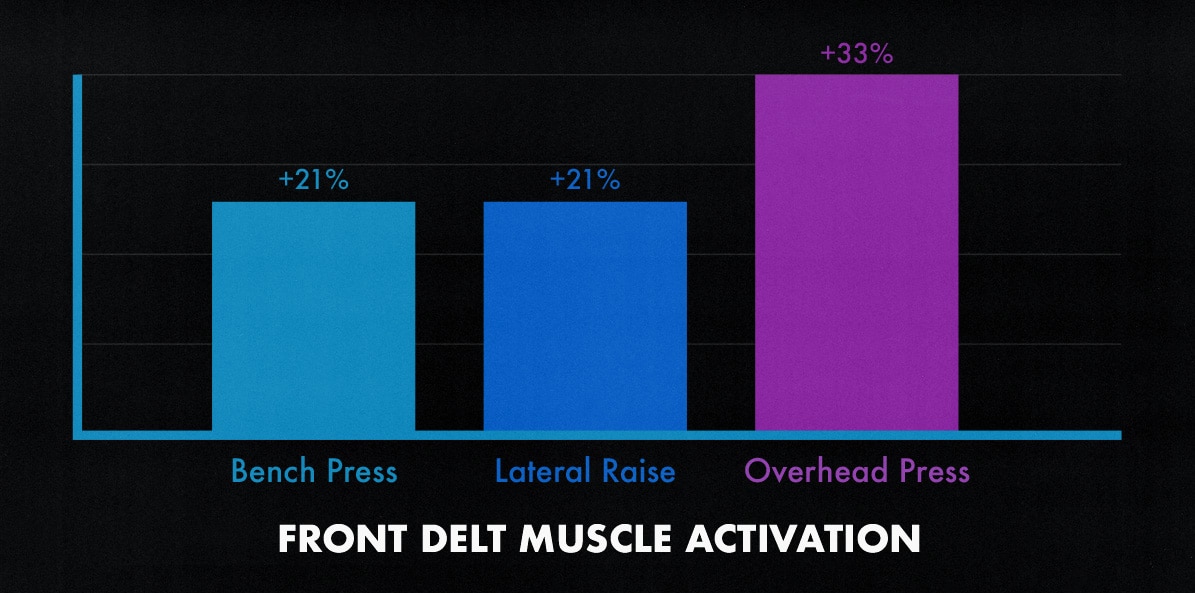
EMG research favours the overhead press, which lines up perfectly with my bias. However, EMG research has a bias of its own. It prefers exercises that are harder at the top of the range of motion, whereas our muscles prefer exercises that are harder at the bottom (research breakdown).
Push-ups and bench presses are more challenging at the bottom of the range of motion, so I suspect they rival the overhead press for building bigger front delts. They may even be better.
Where the overhead press shines, though, is in its ability to stimulate both the front and side delts, which we’ll get to in the next section. That’s why they make for such a good start to Shoulder Day. They’re the best compound lift for building bigger shoulders overall.
Here’s how to pick the best front delt exercise:
- Push-ups are the best place to start. Start with raised push-ups, advance to regular push-ups, then raise your feet up. Push-ups are great for developing the coordination, shoulder stability, and mobility you’ll need to press overhead.
- The one-arm dumbbell overhead press is the easiest overhead press. This is how Marco eases people into bigger pressing variations.
- Landmine presses are good for performance. They challenge your core and serratus along with your front delts and upper chest, making them great for improving shoulder stability. When Marco was training professional and Olympic athletes, these were a favourite of his.
- The barbell overhead press is the king of shoulder exercises. It’s difficult to learn and master, but it’s heavy, stable, and engages most of the muscles in your body.
- The push press flattens out the strength curve. The overhead press is too easy at the beginning and too hard in the middle. You can fix that by exploding the weight up with your shoulders and giving it a bit of a boost with your legs.
- Shoulder press machines are easy and stable. Exercise machines are similarly good to free weights for stimulating muscle growth, at least in the main muscles you’re working.
- Incline bench presses are good for working your upper chest and front delts. They’re also easy to learn. However, they don’t train your side delts or serratus.
- Heavy close-grip bench presses worked well for my front delts. When I was working towards a 315 bench press, I was doing lots of close-grip bench pressing for sets of 4–8 reps. My front delts blew up.
The Best Side Delt Exercises
The side delts aren’t as big as the front delts, but they’re far more popular. They’re the muscles that give you broader shoulders. The overhead press and lateral raise are both amazing side-delt exercises. We’ve already covered the overhead press, so let’s delve into the lateral raise.
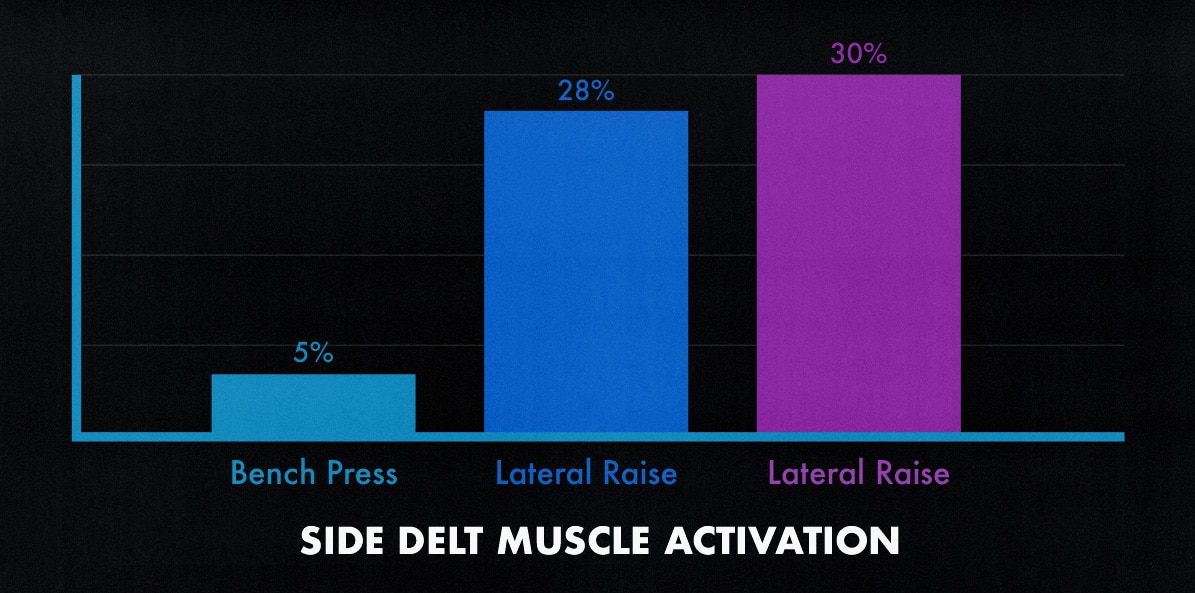
Lateral raises are quick to set up, simple to learn, and easy to do. They also do a good job of working your front and rear delts along with your side delts. The only problem is that they’re too easy at the bottom of the range of motion and too difficult at the top.
There are two ways to fix the strength curve. First, you can increase the challenge at the beginning of the range of motion by lifting with an explosive tempo, accelerating the weight up. The other solution is to turn the exercise sideways, like so:
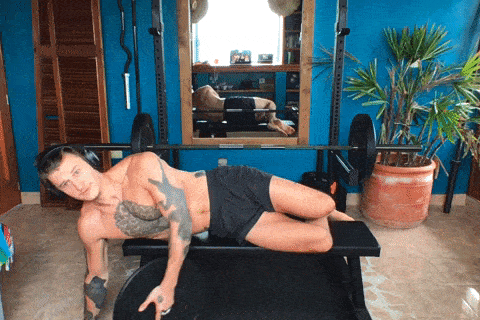
If you don’t want to lie down on a bench, you could stand next to a cable stack with the cable set up around waist height. Either way, this makes lateral raises much harder at the bottom, giving them an ideal strength curve.
Here’s how to pick the best side delt exercise:
- Standing lateral raises are great for beginners. They’re tried and true. Just make sure to put your full effort into the beginning of the range of motion.
- Side-lying lateral raises improve the strength curve. This is a more advanced variation, and it will feel a bit finicky at first, but I suspect you’ll find they work your side (and rear) delts much harder.
- Cable lateral raises can be set up with the cable at your waist. This gives them the same strength curve as side-lying lateral raises. Both are similarly effective.
- Upright rows are good if you can do them painlessly. If you can do them comfortably, they’re a great side and rear delt exercise. They’re finicky, though, so we rarely use them by default.
The Best Rear Delt Exercises
The rear delts are the smallest of your shoulder muscles. They help you pull things toward you, meaning they help with almost every pulling exercise, including chin-ups, pull-ups, rows, and deadlifts. Shoulder day often comes after Back Day, so they may already be quite sore.
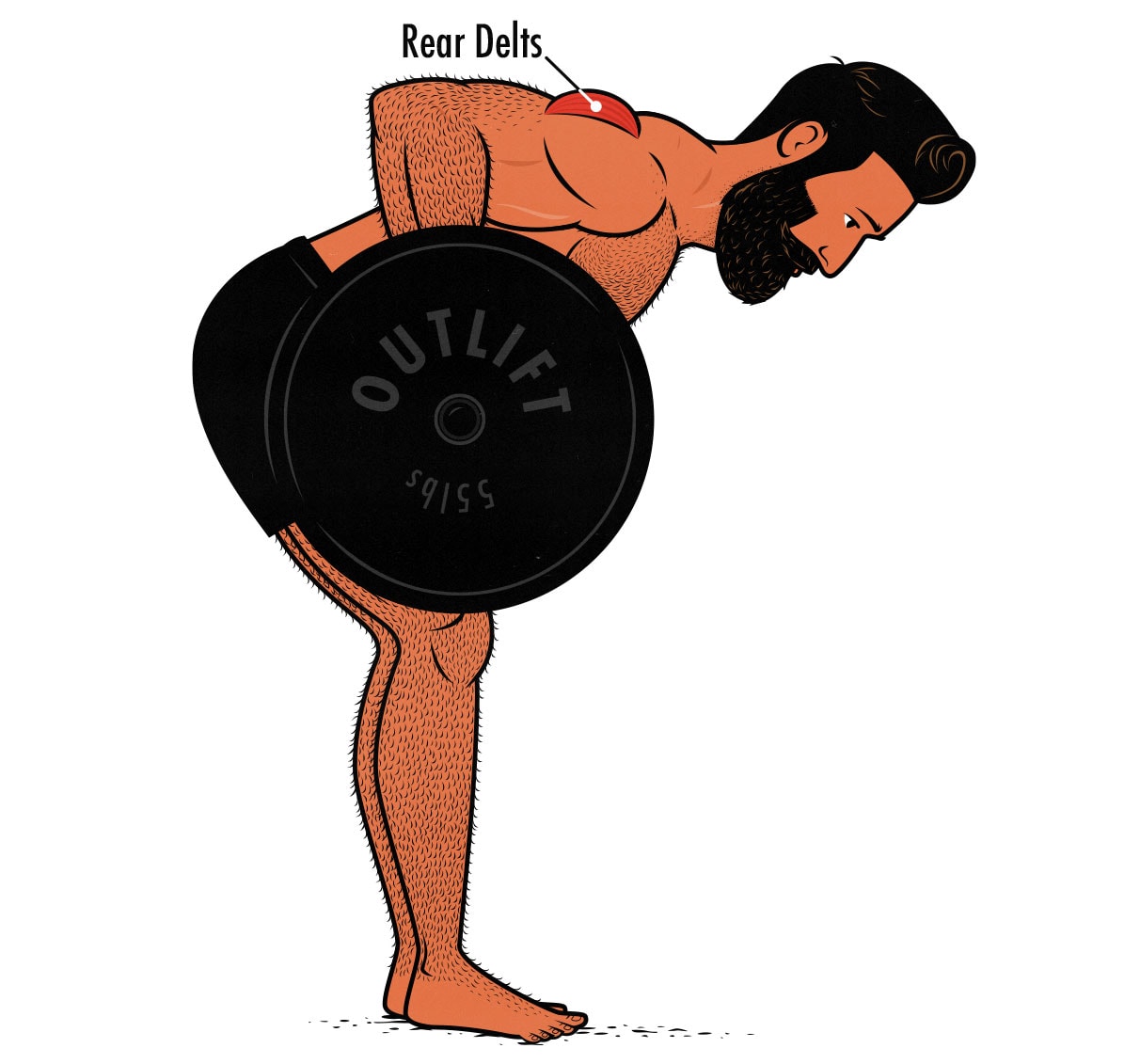
Still, rear delts are part of your shoulders, so they deserve at least one exercise on Shoulder Day. Here’s how to pick the best one:
- The rear-delt fly is the simplest way to train your rear delts. You can do these with dumbbells or use a machine. They aren’t fancy, but they work, especially if you keep the rest times short and sneak some extra drop sets in.
- Face-pulls are great for your rear delts and rotator cuff. They’re decent for your side delts, too. Marco likes to use these to teach people how to open up their shoulders.
The Best Triceps Exercises
You don’t need triceps exercises on Shoulder Day. You could save them for Arm Day. But your arms will grow faster if you stimulate them more often. That’s why I like to include a triceps exercise on Shoulder Day, Chest Day, and Arm Day.
Here’s how to pick the best triceps exercise:
- Overhead extensions stimulate the most muscle growth (study). They work your triceps through the deepest range of motion. They also pair well with overhead pressing (study).
- Triceps pushdowns are great for beginners. They’re easy to learn, easy on the elbows, and don’t require much shoulder mobility.
Shoulder Day Workouts
The Classic Shoulder Day Workout
| EXERCISE | SETS | REPS |
|---|---|---|
| Overhead Press | 5 sets | 6-10 reps |
| Push-Ups | 4 sets | AMRAP |
| Lateral Raises | 4 sets | 12–15 reps |
| Overhead Extensions | 3 sets | 12–15 reps |
| Rear Delt Flyes | 3 sets | 12-15 reps |
A good shoulder workout kicks off with a big pressing exercise, such as an overhead press, push press, or incline bench press. I like to use the overhead press, which does a good job of working both your front delts and side delts.
After that comes push-ups, hitting your front delts and serratus again, but this time with some extra emphasis on your chest (including your upper chest). You could swap these out with an incline bench press or landmine press if you prefer.
Next, choose an exercise for your side delts, rear delts, and triceps. I’ve listed my favourites. I recommend doing these final 3 exercises with short rest times, drop sets, and/or as a giant set.
The High-Volume Shoulder Day Workout
| EXERCISE | SETS | REPS |
|---|---|---|
| Overhead Press | 5 sets | 6-10 reps |
| Incline Bench Press | 4 sets | 8–12 reps |
| Push-Ups | 4 sets | AMRAP |
| Lateral Raises | 4 sets | 12–15 reps |
| Overhead Extensions | 4 sets | 12–15 reps |
| Rear Delt Flyes | 4 sets | 12-15 reps |
This is a higher-volume Shoulder Day workout. There’s an extra set on some exercises, and we’ve added the incline bench press. Most people don’t need this much volume, but you might benefit from it.
The Minimalist Shoulder Day Workout
| EXERCISE | SETS | REPS |
|---|---|---|
| Overhead Press | 3–4 sets | 8–12 reps |
| Feet-Raised Push-Ups | 3 sets | AMRAP |
| Lateral Raises | 3 sets | 12–20 reps |
The minimalist Shoulder Day workout takes an 80/20 approach to training. It won’t be enough to fully maximize muscle growth, but it should be enough to make progress. Since you aren’t doing many sets, I recommend taking all your sets of push-ups and lateral raises to failure.
I like to train more vigorously when I’m bulking, but I love these workouts during periods of maintenance.
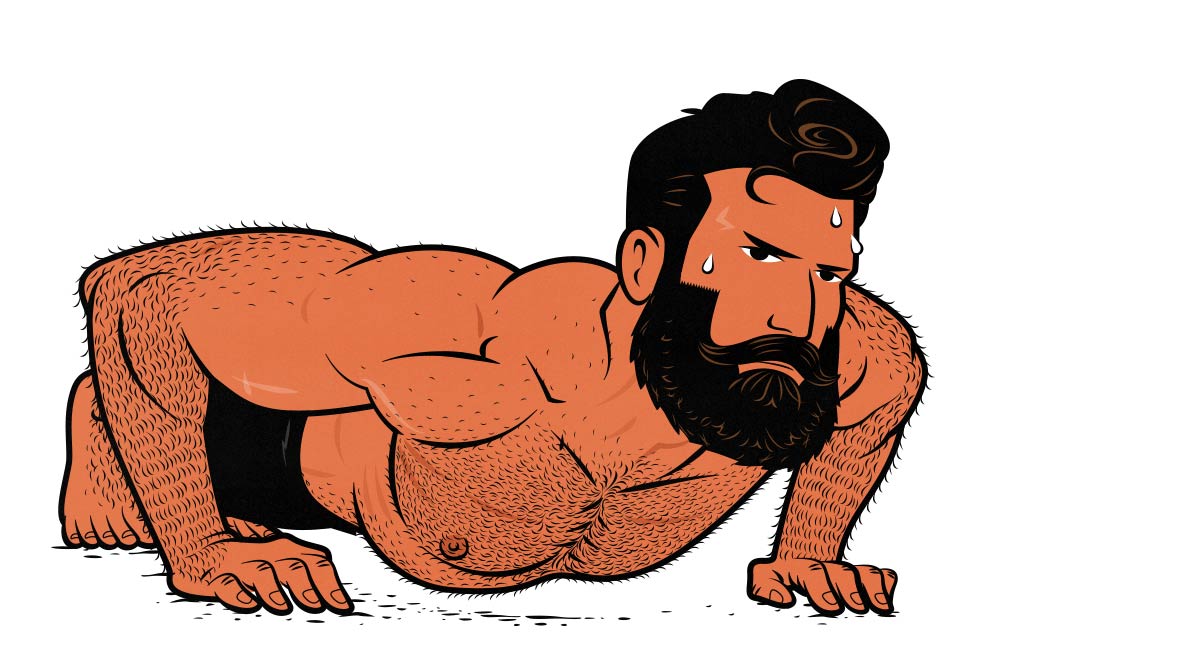
Shoulder Day Training Guidelines
Shoulder Days are classic bodybuilding workouts. Bodybuilders love the burn, the pump, the pain, and the strain. The rest times are short, the sets are taken to failure, and there isn’t much attention paid to how much weight you’re lifting.
Still, you’ll find it much easier to build muscle if you apply the principles of hypertrophy training. Especially progressive overload. It’s the simplest way to measure the progress you’re making.
Here’s what we recommend:
- Progression: The goal is to get progressively stronger at the first exercise of each workout. If you hit your rep targets last workout, add a little weight. If you’re still trying to add more reps, try to get more total reps than last time. For example, if you got 10, 9, 8, and 7 reps (34 reps) last workout, try to get 35+ reps this workout.
- Volume: We have 5 exercises in the classic Shoulder Day workout. That’s probably enough to maximize your rate of muscle growth, provided you lift deep, hard, and properly. Some people benefit from more training volume than others, though, so we’ve given higher-volume and minimalist approaches well.
- Rest times: Classic Shoulder Day workouts are done with moderate or short rest times. We recommend resting for 3 minutes between sets on the first exercise, 2 minutes between sets of your other compound exercises, and 1 minute between sets of isolation exercises.
- Reps in Reserve: Push yourself hard on the first exercise, leaving 1–2 reps in reserve, ideally avoiding failure. On the other exercises, leave 0-1 reps in reserve. It’s okay to take them to failure, especially on the final sets.
- Eat for Muscle Growth: You need enough food to fuel muscle growth. If you’re skinny-fat or overweight, you can get extra energy from your body fat. If you’re thin or lean, you’ll need to get that energy from your food—you’ll need to gain weight.
If you want us to keep you updated on the latest muscle-building research, methods, and workouts, we have a free muscle-building newsletter.
Alright, that’s it for now. If you have any questions, drop them below. I’ll answer all the comments.



